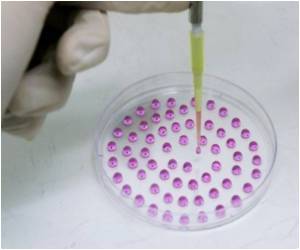
Elucidating the mechanisms by which hormonal signaling influences stem cell behavior under normal conditions and in response to stress provides important insights into the activities of stem cells in regenerative medicine, during wound repair, and in individuals experiencing metabolic stress. The findings are published in the Nov. 4, 2010, online edition of the journal Current Biology.
"Tissues that are maintained by stem cells respond to adverse environmental conditions by reducing the overall number of stem cells, as well as the activity of those stem cells, but maintain them in such a state that they can respond quickly and effectively once the nutritional conditions become more favorable," says Leanne Jones, Ph.D., assistant professor in the Laboratory of Genetics, who led the study.
Stem cells, with their defining characteristics—extensive proliferative potential and an ability to give rise to one or more specialized cell types—are common in early embryos. But by adulthood, only a few stem cells remain, tucked away in their own private niches. They have, nonetheless, retained a remarkable capability: They can operate at a "steady state" to maintain and repair tissues.When living conditions become adverse, animals may go through a period of reduced metabolism to allocate limited resources and maintain tissue homeostasis. In addition, a number of animals, such as those that hibernate, experience a decrease in metabolic rate as part of their normal cycle.
Source-Eurekalert











